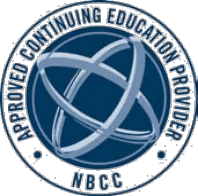Course Summary
Practice Level: Intermediate
Violence and aggression among children and adolescents are a growing and concerning occurrence, causing school and health professionals as well as public officials and policy makers to seek solutions. Bulling is defined as many things, however key concepts include the repeated attempt of person(s) to exert power over another individual or group of individuals. Common characteristics of bullying include physical to subtle forms of aggression that health professionals must understand in order to help both victim and perpetrator recognize acts of aggression and address them. The purpose of this course is to provide health clinicians with knowledge of bullying, its forms and effects upon children and adolescents, as well as ways to prevent it and to support healing.
Course Format
This course contains downloadable online lessons (PDF) and a practice test. When you’re ready, purchase the course by clicking the “Add To Cart” or “Enroll” button. This will let you take the test, complete the course evaluation and receive your certificate for CE credits.
Learning Objectives
- Describe bullying
- Discuss cyberbullying
- Explain interventions for bullying
- List the risk factors for bullying
Course Syllabus
- Introduction
- History Of Bullying
- What Is Bullying?
- Evolution of the Definition of Bullying
- Models And Theories Of Bullying
- Bullying: Outcome of Differences Between Individuals
- Bullying as a Developmental Process
- Bullying as a Socio-cultural Phenomenon
- Bullying as a Response to Peer Pressure
- Bullying from the Perspective of Restorative Justice
- Forms of Bullying
- Gender And Bullying
- Gender Differences and Cyberbullying
- Cyberbullying
- Bullying: A Significant Issue
- Prevalence Of Bullying
- Predicting Bullying And Violent Behavior
- Characteristics of Bullies
- Recognizing The Signs of Victimization
- Risk Factors And Vulnerable Populations
- 1. Family Factors
- 2. Personality Factors
- 3. School Factors
- 4. Individual Risk Factors
- 5. Peer Group Risk Factors
- 6. School Risk Factors
- 7. Family Risk Factors
- 8. Community Risk Factors
- 9. Societal Risk Factors
- Special Needs and Disabilities (SEND)
- Disability Type and Severity
- Disability Characteristics
- Sexual Minority Youth
- Negative Impact Of Bullying
- Sexual Minority Youth
- School Programs and Responsibilities
- Basic Principles for Prevention and Intervention
- Dealing with Bullying Incidents
- Steps To A Successful School-wide Program
- School Nurse Responsibilities
- Assessing and Identifying Bullying
- Intervention and Prevention Programs
- Immediate Response Plan
- Building a Schoolwide Foundation
- Early Interventions
- Individual Interventions
- Targeted Interventions
- Individual Interventions in Chronic or Extreme Bullying Cases
- Peer Mentoring and Peer Mediation
- Peer Mentoring
- Establishing a Peer Mentoring Program
- Peer Mediation
- Summary
Author
Jassin M. Jouria, MD
Jassin M. Jouria is a medical doctor, professor of academic medicine, and medical author. He graduated from Ross University School of Medicine and has completed his clinical clerkship training in various teaching hospitals throughout New York, including King’s County Hospital Center and Brookdale Medical Center, among others. Dr. Jouria has served as a test prep tutor and instructor for Kaplan. He has developed several medical courses and curricula for a variety of educational institutions. Dr. Jouria has also served on multiple levels in the academic field including faculty member and Department Chair. Dr. Jouria continues to serves as a Subject Matter Expert for several continuing education organizations covering multiple basic medical sciences.
Accreditation Approval Statements
CE4Less.com is approved by the American Psychological Association to sponsor continuing education for psychologists. CE4Less.com maintains responsibility for this program and its content.

CE4Less.com has been approved by NBCC as an Approved Continuing Education Provider, ACEP No. 6991. Programs that do not qualify for NBCC credit are clearly identified. CE4Less.com is solely responsible for all aspects of the programs.
Courses have been approved by CE4Less.com, as a NAADAC Approved Education Provider, for educational credits. NAADAC Provider #91345 CE4Less.com is responsible for all aspects of the programming.
We are committed to providing our learners with unbiased information. CE4Less never accepts commercial support and our authors have no significant financial or other conflicts of interest pertaining to the material.


